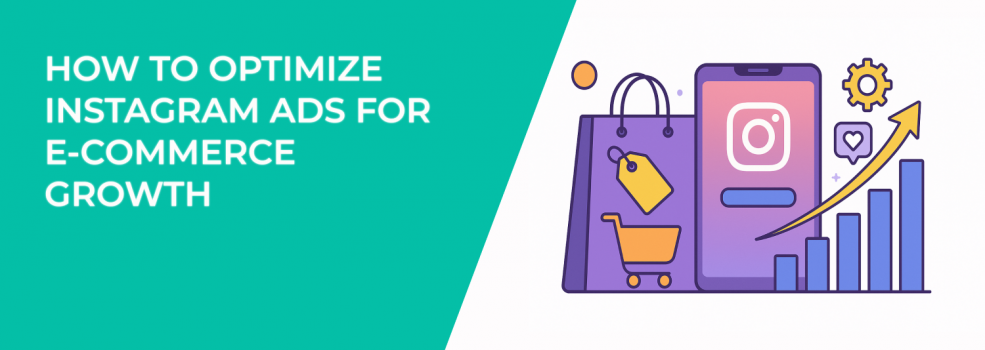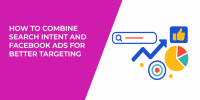Instagram ads can drive serious revenue for e-commerce brands, but only if you move beyond the obvious. Everyone knows to test creatives and retarget cart abandoners. The brands that win are those that treat Instagram as a system of signals, not just a placement.
Here are advanced ways to optimize Instagram ads for scalable e-commerce growth.
Build Micro-Segmented Audiences
Don’t settle for one big lookalike or a broad interest group. Instead, break audiences into micro-segments. For example:
-
Create separate lookalikes for high-LTV buyers versus one-time purchasers.
-
Segment cart abandoners by product category and tailor ad creatives to each.
-
Use engagement custom audiences (video viewers, post engagers) to prequalify warm traffic before pushing conversions.
This approach helps you control messaging at a granular level. Instead of blasting everyone with the same ad, you’re tailoring offers based on intent and value. For a step-by-step breakdown of building precision audiences, see Facebook Ad Targeting 101: How to Reach the Right Audience.
Prioritize Creative Hook Testing Over Format Testing
Most brands test formats (carousel vs. single image), but the real lever is the hook. The opening two seconds of a video or the very first image in a carousel sets the tone for engagement.
Advanced advertisers run “hook-only” split tests, keeping everything else the same. By isolating the hook, you’ll learn which opening frames make people stop scrolling. Once you’ve found the winning hook, you can build multiple ad variations around it.
If you’re mapping creatives to funnel stages, you’ll also want to read Meta Ad Campaign Objectives Explained: How to Choose the Right One.
Show Products the Right Way
Product presentation in Instagram ads often gets overlooked. But the way your product appears can completely change how people perceive its value.
Here’s how to get it right:
-
Context matters: show your product in use, not just on a plain background.
-
Highlight scale: use props or hands to make dimensions clear.
-
Use movement: motion grabs attention faster than static shots.
-
Feature variations subtly: highlight a couple of best-sellers instead of overwhelming buyers with every option.
And don’t underestimate product visuals — a poor photo can drag performance down. If you want deeper insights on this, check Why Your Product Images May Be Hurting CTR (and How to Fix Them).
Optimize for Incrementality, Not Just ROAS
ROAS looks great on a dashboard, but much of it can be cannibalized revenue from buyers who would have purchased anyway. To avoid this trap, measure incremental lift: the actual sales driven by your ads that wouldn’t have happened otherwise.
You can test this by:
-
Running geo-split tests (ads in certain regions only).
-
Holding out a percentage of your audience as a control group.
-
Comparing organic vs. paid lift in specific cohorts.
This mindset ensures you’re growing profitably, not just padding numbers.
Use Sequential Storytelling
Instead of showing one generic conversion ad, build multi-step ad journeys:
-
Hook with a short Reels video introducing the problem or desire.
-
Follow up with a carousel ad showing product features.
-
Close with a dynamic product ad showing the exact item viewed.
This sequencing mirrors how people actually shop online — rarely do they buy on first exposure. To make the most of this tactic, explore The Secret to Retargeting Success on Instagram: Best Practices.
Blend Broad Targeting With Signal-Rich Data
Many advertisers either go ultra-narrow or ultra-broad. The advanced move is broad targeting layered with high-quality signals.
For example, run broad campaigns but only optimize for high-intent events like “Initiate Checkout” instead of “Add to Cart.” Or feed the algorithm with CRM conversions, not just pixel data.
Meta’s machine learning performs best when you give it room to explore — but also clear signals to guide it.
Optimize Landing Pages for Post-Click Behavior
Optimizing ads doesn’t stop at the click. Advanced advertisers study post-click behavior with tools like session recordings and funnel analytics.
If drop-offs spike at checkout, no creative tweak will fix that. Often the best lever for ad performance is smoothing out friction on your landing page. For extra tactics, check Why Your Mobile Landing Page Is Killing Conversions (And How to Fix It).
Leverage Creative Fatigue Analysis
Instead of waiting for performance to dip, track creative fatigue signals early. For example:
-
Rising frequency with flat CTR.
-
Declining unique reach in stable budgets.
-
Stagnant engagement ratios.
Rotate creatives before fatigue impacts ROAS. Proactive management keeps campaigns stable instead of reactive “panic swaps.”
Final Thoughts
Optimizing Instagram ads for e-commerce growth requires moving beyond surface-level tactics.
Micro-segmentation lets you target intent more precisely. Hook testing reveals what truly stops the scroll. Product visuals drive desire when shown the right way. Sequential storytelling mirrors real shopping journeys. And a ruthless focus on incrementality ensures you’re scaling profitably.
These aren’t tricks. They’re advanced frameworks that help serious advertisers build campaigns that keep delivering long after the “quick hacks” stop working.

